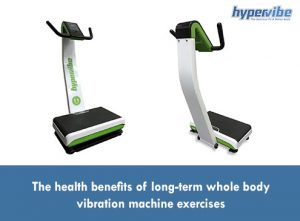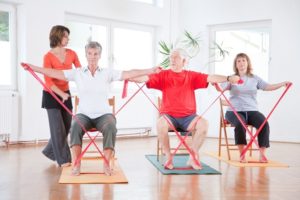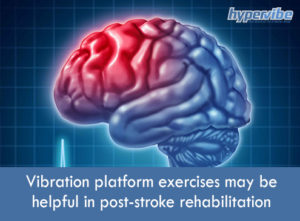Exercises or Drugs? Benefits Are Similar, Studies Suggest

Although the benefits of physical activities have been well known for hundreds of years and thousands of papers and books have been written on this topic, a worrying number of people still seems to perceive exercises as some hardly tolerable intrusions to their sedentary and comfortable lives.

Situation is quite similar in the U.S. According to the National Cancer Institute, only 5% of all adults in the U.S. get at least 30 minutes of moderate-intensity physical activity per day, and 79% don’t meet the general guidelines that advice getting 2 ½ hours of exercises weekly.
A study published in the Morbidity and Mortality Weekly Report of the Center for Diabetes Control and Prevention analyzed the self-reported data from more than 450,000 respondents, 18 and older. 21% of the participants said they met the aerobic and muscle-strengthening guidelines, 52% said they met only the aerobic guidelines, and 29% said they met only the muscles-strengthening activity recommendations.
Whether we choose to believe these reports or not, the conclusion is pretty much the same: most adults aren’t doing enough physical activities, despite knowing the benefits of regular exercises and being well aware of the negative impact sedentariness has on one’s overall health.
Regular exercises have been shown to lower the risk of type 2 diabetes, heart disease, depression, stroke, early death, as well as to help in weight management, reduce the risk of fractures, lower the risk of cognitive decline and even fight certain forms of cancer.
These facts are well-known and supported by so many scientific papers that it’s hard to understand why the great majority of people still prefers to embrace a rather sedentary lifestyle. Perhaps if exercise was prescribed as medicine, more people would do it! But wait …
Exercise is medicine, studies show
A very recent report proves that physical activity has the same effects as prescribed drugs in treating some of the most common conditions leading to death – diabetes, heart disease, chronic heart failure and stroke.
The study, published in October, focused on analyzing the effectiveness of commonly prescribed drugs, respectively physical exercises, in reducing deaths among people with the mentioned diseases. The research covered 305 past experiments and 340,000 participants, out of which 14.716 had received exercise as therapy for their ailments. The outcomes of drug-based treatments, exercise regimens and combined treatments (medications plus physical activity) were compared, results showing that drugs and exercise produce quite similar effects.
To better understand how important these findings are, it’s worth mentioning that the exercise routines prescribed in these studies consisted mostly of walking or moderate aerobic activities, and only occasionally of weight training and other exercises.
Results showed that people with heart disease or diabetes who practiced physical activities without taking regular drugs had the same risk of dying as those who followed common drug-based treatments. Those with chronic heart failure taking medications had a lower risk of dying than patients doing only physical activities, while in people who had suffered a stroke, the risk of dying was lower when exercises were performed as therapy.
So what this report says is that you don’t need to train like an athlete or to turn into a bodybuilder in order to stay healthier and reduce the risk of death due to such health problems. Standing up every 30-60 minutes and moving around for a few minutes, walking for 20-30 minutes a day, doing moderate exercises with resistance bands, biking, doing aerobics or simply talking a brisk walk for 30 minutes a day, 5 days a week, is very helpful in countering the negative effects of sedentariness and reducing the risk of ailment.
Or, if you’re willing to do a change and embrace a healthier lifestyle, but don’t really like the idea of doing classical cardio or fitness workouts, you could give whole body vibration therapy a try! This form of training has been shown to provide significant health benefits, from stronger muscles and bones to improved coordination, flexibility, balance and circulation. WBV training can be performed daily, in bouts of 10 minutes, as per your health and fitness goals.
If you’re already using a whole body vibration platform for home training or therapy, we’d like to hear from you! Feel free to leave your comment below, or join our community on Facebook!















